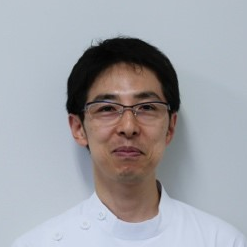Functional Materials and Digital Technology in Biomedical Applications for Oral and Maxillofacial Surgery
A special issue of Materials (ISSN 1996-1944). This special issue belongs to the section "Biomaterials".
Deadline for manuscript submissions: closed (20 April 2023) | Viewed by 8709
Special Issue Editor
Interests: oral and maxillofacial reconstruction; dental implants; titanium materials; osteoblast behavior; bone healing
Special Issue Information
Dear Colleagues,
Various types of biomaterials for oral and maxillofacial surgery have been developed for functional and morphological reconstruction to ensure patient quality of life. Recent advancements of CAD/CAM technology enable the development of highly functional biomedical materials and devices. However, the clinical application of new technologies has a challenging aspect. Therefore, translational research of those materials and devices is quite important to go to further clinical or basic research. This Special Issue covers biomaterial research of “bench to bedside” or “laboratory to clinic” for patients with facial trauma, head and neck cancer, jaw deformity, and osteomyelitis/osteonecrosis of the jaw. To address this, interaction between osteogenic cells and dental-implant-related materials and maxillofacial reconstruction, between mechanical strength and bone reconstructive materials, between CAD/CAM technology and computational simulation, and between minimally invasive devices and patient QOL are topics of focus. Surface technology to enhance osteoblast attachment and behavior on titanium, in vivo imaging or quantification of physiological activities in the oral and maxillofacial region also provide useful information.
In conclusion, it is a great pleasure to invite all researchers dedicated to research and development of material sciences for returning or preserving QOL in the oral and maxillofacial field to submit your contributions to this exciting new Special Issue.
Dr. Makoto Hirota
Guest Editor
Manuscript Submission Information
Manuscripts should be submitted online at www.mdpi.com by registering and logging in to this website. Once you are registered, click here to go to the submission form. Manuscripts can be submitted until the deadline. All submissions that pass pre-check are peer-reviewed. Accepted papers will be published continuously in the journal (as soon as accepted) and will be listed together on the special issue website. Research articles, review articles as well as short communications are invited. For planned papers, a title and short abstract (about 100 words) can be sent to the Editorial Office for announcement on this website.
Submitted manuscripts should not have been published previously, nor be under consideration for publication elsewhere (except conference proceedings papers). All manuscripts are thoroughly refereed through a single-blind peer-review process. A guide for authors and other relevant information for submission of manuscripts is available on the Instructions for Authors page. Materials is an international peer-reviewed open access semimonthly journal published by MDPI.
Please visit the Instructions for Authors page before submitting a manuscript. The Article Processing Charge (APC) for publication in this open access journal is 2600 CHF (Swiss Francs). Submitted papers should be well formatted and use good English. Authors may use MDPI's English editing service prior to publication or during author revisions.
Keywords
- Dental implant
- Maxillofacial reconstruction
- Surface technology
- CAD/CAM technology
- Titanium materials
- Biodegradable metal composites
- Computational simulation
- Physiological activities in head and neck area
- Osteoblast attachment and behavior
- Mechanical strength of reconstructive material
- Quality of life for oral cancer and facial trauma survivors






